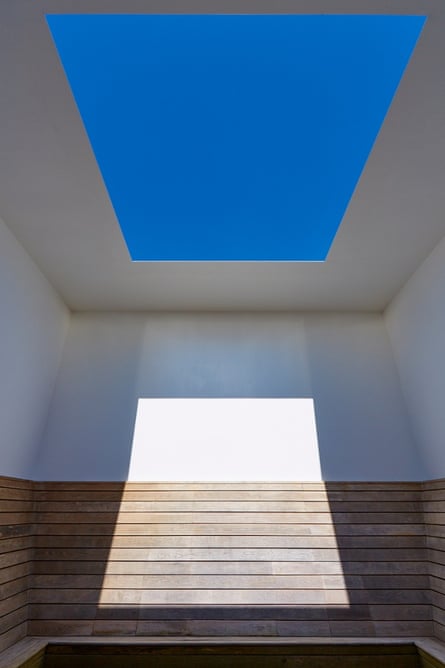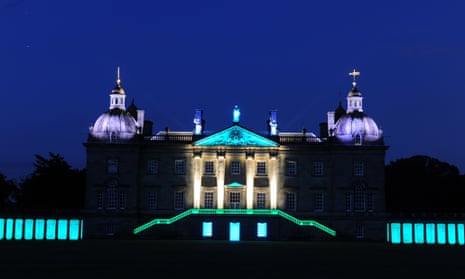People are walking out of the setting sun, between the trees and the ha-ha, like purple shadows. I am standing on the stone threshold of a Palladian country house, watching them intently. What am I on? It is perfectly legal. It’s not even a legal high that’s going to be banned by Theresa May. All I have taken, honest officer, is a dose of James Turrell’s mind-bending art.
It all started when we crossed the ha-ha – which is country house speak for a walled ditch – and found a folly that looks like a classical temple but is in reality an old water tower. Entering via a pitch-black corridor, everything became strange. I could only negotiate the tunnel’s bends by feeling the walls until suddenly I was inside a throbbing, pulsing purple cloud. With time, as more people stumbled in, a glowing blue screen appeared – but I soon found I could put my hand right through it, into the space beyond that seemed infinite and immeasurable, empty and yet solid: an entity of light.

If you are looking for psychedelia in the English countryside this summer, Houghton Hall near King’s Lynn has an alternative to the usual festivals. James Turrell’s exhibition at this grand classical house built for Britain’s first (and most corrupt) prime minister Robert Walpole in the early 1720s is like a silent, empty and beautifully eerie festival. Instead of decibels it has swamps of colour, instead of crowds green landscaped gardens where hounds and herds of deer wander. It is a trip. As the bearded, beaming Turrell disarmingly observed at the unveiling when asked if it was not too crass to call his art psychedelic: “It’s actually much better on drugs.”
Why would an American visionary whose life’s work is the slow and still unfinished transformation of Roden Crater in Arizona into a cosmic observatory want to decorate an English country garden? Well, it is a very large garden, with plenty of space and calm in its hidden nooks for Turrell to create contemplative experiences of natural and artificial light. At dusk on a warm day, the circular opening in the roof of his Skyspace turns a deep, dark, thick blue, like a painted sky, or pigment on a palette. It is entrancing – so this is what a piece of the sky becomes when you isolate it, an almost solid phenomenon. Yet when you leave, the sky outside is not as dark as that. It is all in the mind, the world we see. James Turrell reveals reality to be just a trick of the light.
This exhibition has been 15 years in the making. Houghton’s owner, the Marquess of Cholmondeley, is a devout collector of Turrell’s art who has commissioned a series of permanent installations on his estate. As Turrell admits, you bascially need a country house to own his expansive as well as expensive art. This show celebrates a very modern relationship between artist and patron. There are models for Roden Crater; holograms, LED works and even a colour television in the stables. Literally a colour television: you sit and watch as blues and greens merge in abstract mystery.

Turrell’s involvement with this very British bit of the Earth’s surface is not, I think, just a cynical attempt to earn money to plough into his vast project in the Arizona desert. There is a mystery in the British fields and woods that is at the heart of Turrell’s enterprise, for Roden Crater is one man’s attempt to give America its own Stonehenge. It is our neolithic heritage of stone circles aligned to the solstices and burial chambers whose dark tunnels frame the setting sun that he seeks to rediscover. As Turrell shows me a bronze model of an immense chamber inside Roden Crater and explains how as you ascend its staircase you will emerge into a dazzling vision of the night sky, I feel I could be listening to a stone age priest’s proposal to build a big stone circle on Salisbury Plain.
As darkness swarms the woods, the evening culminates with Turrell’s illumination of Houghton Hall itself, turning colonnaded galleries into tunnels of red and rooftop domes into blue lanterns. I suggest Pink Floyd’s Echoes on the iPod at this point. Only batwings and breezes sounded in the country air as I suddenly found myself walking towards the house, into the light, to lose my head in the purple haze.
- James Turrell’s LightScape is at Houghton Hall, near King’s Lynn, Norfolk, from 7 June until 24 October

Comments (…)
Sign in or create your Guardian account to join the discussion